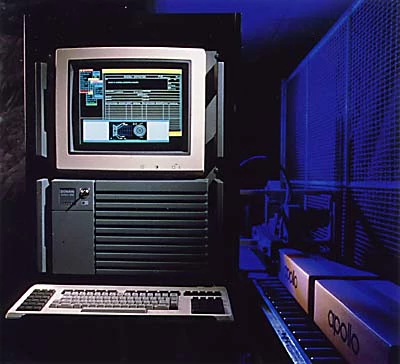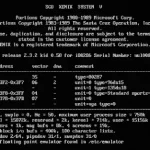Last Updated on: 25th October 2023, 03:53 pm
Web site: (not active)
Origin: USA
Category: Workstation
Desktop environment: wgmr
Platform: Apollo
Based on: UNIX-like
Wikipedia: Domain/OS
Media: Install
The last version | Released: R10.4.1.2 | March 1992
Domain/OS – an Unix-like and Multics*-like the Apollo/DOMAIN operating system produced by Apollo Computer, Inc. (founded in 1980 in Chelmsford, Massachusetts, by William Poduska) from 1980 until 1989, when it was purchased by Hewlett-Packard. It was originally launched in 1981 as AEGIS, and was rebranded to Domain/OS in 1988.
The first Apollo/DOMAIN systems were the DN100s, of which 2 were shipped on March 27, 1981 with Aegis SR1 installed on them to Harvard University (information provided by Jim Ward). Documentation for Aegis SR1 consisted of 3 books written by Penny Orwick. The DN100s were discarded by Harvard University a few years ago (Harvard CS Help Desk).
The latest OS that is available for Apollo’s is Domain/OS SR10.4.1.2 (SAU7) and SR10.4.1.1 (all other SAUs), consisting of 5 tapes for SR10.4 and 3 tapes for the SR10.4.1 upgrade. Hewlett-Packard offers some patches for Apollo/DOMAIN machines (You are now required to register (free) to retrieve any patches) (Domain/OS SR10.3.5 and SR10.4/SR10.4.1). Those patches bring the OS up to SR10.4.1.2. All the SAUs from SAU1 thru SAU6 (all three-digit machines except the new HP/Apollo 4xx Series) were dropped at SR10.4 and thus can’t run Domain/OS SR10.4 operating system. SAU1 (DN100, DN400, DN420, DN600) was dropped at about SR9.7.5 or SR9.7, thus making SAU1 systems (DN100, DN400, DN420, DN600) the only ones that can’t run any of the SR10 systems.
The DN10000 machines run a different OS release, with a .p suffix, which stands for PRISM, the name of the DN10000 CPU’s architecture (Parallel Reduced Instruction Set Machine), e.g. SR10.4.p. The latest OS for DN10000’s is SR10.4.1.2.p, consisting of the 5 basic install tapes for SR10.4.p, one upgrade tape for SR10.4.1.p and HP’s patches.
Apollo was one of the first vendors of graphical workstations in the 1980s, featuring a display manager which was integrated with the operating system’s own window manager known as wmgr.
*Multics (“Multiplexed Information and Computing Service”) is an influential early time-sharing operating system based on the concept of a single-level memory.



